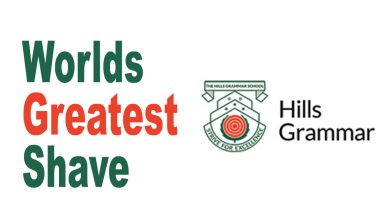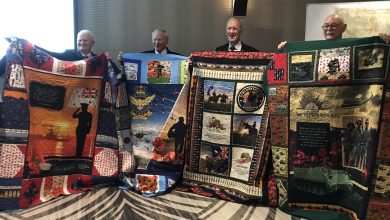He may be nearly 80 but John Baynie’s only just hanging up his hat after an amazing 60 years with the local St John Ambulance Service
Joining in 1956 when he started with a first aid course, the Thornleighborn lad whose parents settled here from Lebanon in 1925, gave up his Saturdays in summer and Sundays in winter tending sports players of all ages – including the Hornsby Asquith rugby league team, Pennant Hills netball and little athletics, and the St Ives rugby union matches, running onto fields clutching the canvas stretcher and first aid box to tend the sprained ankles, the broken collar bones, the winded and concussed.
“First aid gave me the satisfaction of helping those in need at a time when they needed it most,” said John.
“Of course first aid has come a long way since then. When I started our kit was very basic – bandages, a few analgesics and not much more. Oh, and iced water.”
The infamous iced water temporarily relieved the pain or slowed down bleeding though “the guys didn’t like the freezing water down their pants when they got kicked in the groin,” he chuckles.
Now of course the St John Ambulance arsenal includes oxygen and defibrillators out of well-equipped vehicles, with many of today’s officers almost paramedics, such is the level of their medical training.
“Our practices have changed considerably too – look at artificial respiration. Back when I started in the fifties it was quite brutal and I used to think that it was great that people lived despite what we did to them! That was because we’d put people face down and press on the small of their backs to a routine.
“Later on in the seventies we’d blow into their mouths – no-one worried about catching germs and diseases back then.
“Now you put them on their side if they’re unconscious and breathing or on their back if not, and either way you tilt their head back. It’s not essential to blow anymore as it’s understood now that by doing chest compressions at the centre of the breast bone, you’re forcing air out, so blowing isn’t necessary.”
Despite a commemorative dinner held in his honour by his Division, John is quiet and modest and not keen to trumpet his six decades of service. Yet giving up one day every weekend for so long certainly deserves notice, not least as he held a full-time job in sales administration and had four children, all themselves busy with weekend sporting activities.
“Anne and I have been married for 54 years and I don’t know how she stayed with me for so long, with me disappearing all the time.”
He even tended his own kids on occasion, “but nothing serious thank goodness. Our daughter Carmel was a netball player, eldest son Greg, was a rugby league player, and two other sons Anthony and Matt, played soccer. They all had various run of the mill sporting injuries.”
Aside from being a familiar fixture at sports matches along with the ref and the half time oranges, John also served his community running first aid classes and manning first aid stations at Hornsby, Bobbin Head, Lane Cove National Park and Brooklyn. He also helped firefighters during some of our worst fires, including at Terrey Hills last year.
But possibly the achievement he’s most proud of is starting the St John Ambulance Division in Hornsby, along with the late John Ward, in 1958. For many years it operated out of Willow Park, a historic building (now an arts centre) off Edgeworth David Avenue, funded by Hornsby Council.
The City to Surf, Royal Easter Show and New Year’s Eve at McMahon’s Point were all on John’s regular round of duties. “There’d be 15,000 to 20,000 new year revellers most years,” he said. “It was hard to get the ambulances in and out so we kept the person alive until the ambulance could get through. We’d make sure the drunken revellers didn’t die as they threw up, treat people who’d walked barefoot on broken glass, or others falling over from too much drink.”
When John retired from active service, taking it easy at home in Wahroonga was never going to be an option – he trained instead before becoming President of the Hornsby Division for 22 years.
John’s long service is all the more remarkable knowing he also served 13 years in the Army Reserve and 15 years with Hornsby District Scouts. Not surprising then that he’s received the Service Medal of the Order of St John.
But for John it’s always been about serving without fuss or fanfare, which is why when asked for a photograph taken in his early days, he simply says there are none. They just came onto the field, helped, and quietly went home. “I wasn’t a rescuer – I was more the backup,” he says modestly. “I can’t claim to have saved a life, but I eased a lot of pain.”










